This morning we woke early, got our bakery treats, and headed into the Marseille St. Charles train station to board an 8:01 a.m. high-speed train bound for the Spanish border and the magical city of Barcelona! The high-speed trip took only 4 hours, 37 minutes, and ran mostly along the coast.
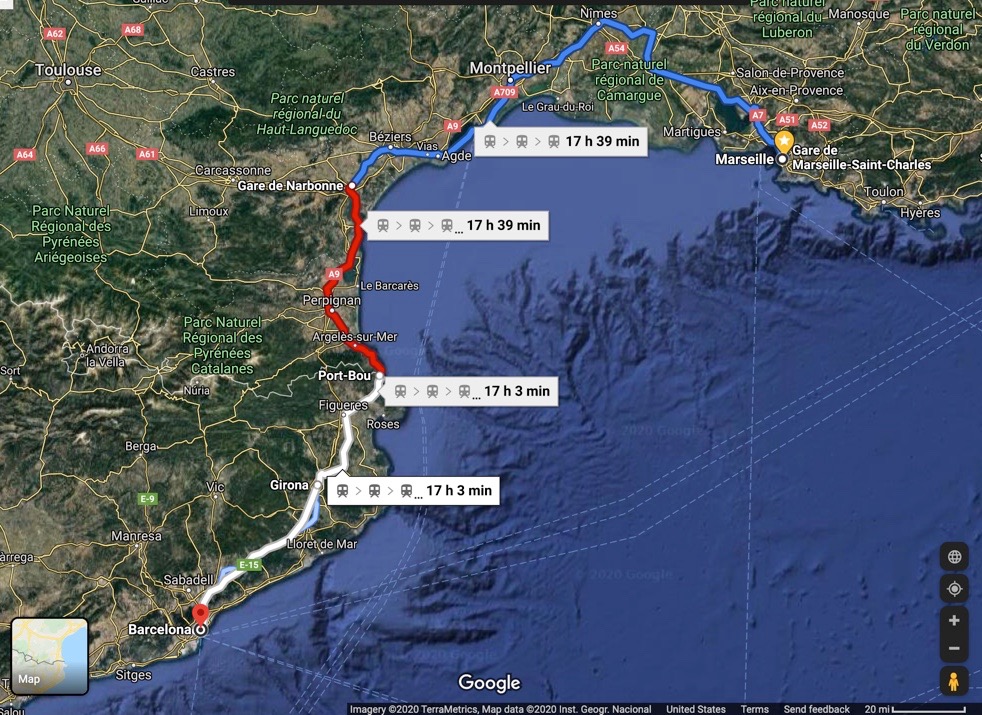
We also passed beneath the southern snow-capped terminus of the beautiful Pyrenees mountains. The mountains where we were looking were near the tiny, landlocked country of Andorra, sitting on the border between France and Spain, high in the Pyrenees mountains.

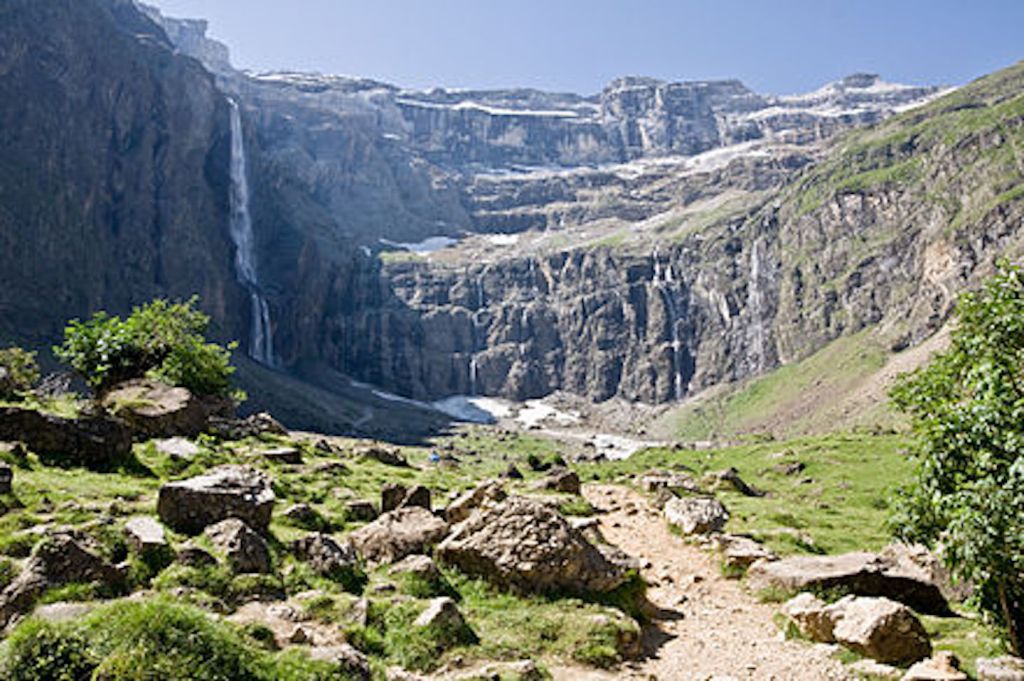
In the heart of Andorra, one can discover Europe’s largest thermal spa, Caldea, where you can enjoy the benefits of Andorra’s thermal waters in a unique mountain location set in the heart of the Pyrenees.
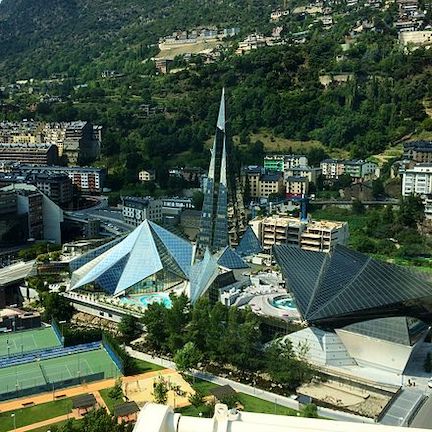
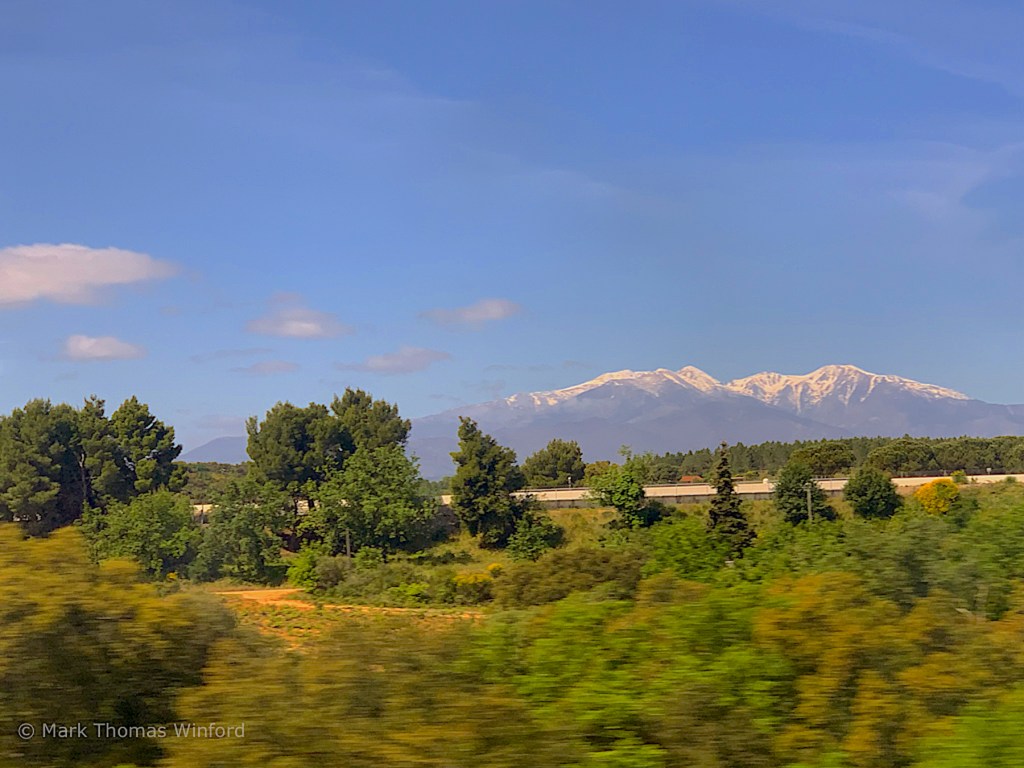
We arrived at the main train station in Barcelona at 12:38 p.m. The best way to get to our Airbnb apartment, just steps away from Antoni Gaudi’s Park Güell was by Barcelona metro. We arrived at our apartment, a little slice of Barcelona heaven, at around 1:15 p.m. The hostess, Isabel, was there to greet us when we arrived. Isabella was warm and friendly and full of great information on what to see locally – of course we told here we were very enthused about being in Antoni Gaudí’s magical city. Isabel even stopped by with her daughter later on, who was also bubbly and wonderful. She was nice enough to snap our photo in the beautiful private garden for her scrapbook and for our memories. The gravelled garden made the small, efficiency apartment seem huge, as we spent a lot of time relaxing there throughout our 6 days in Barcelona.
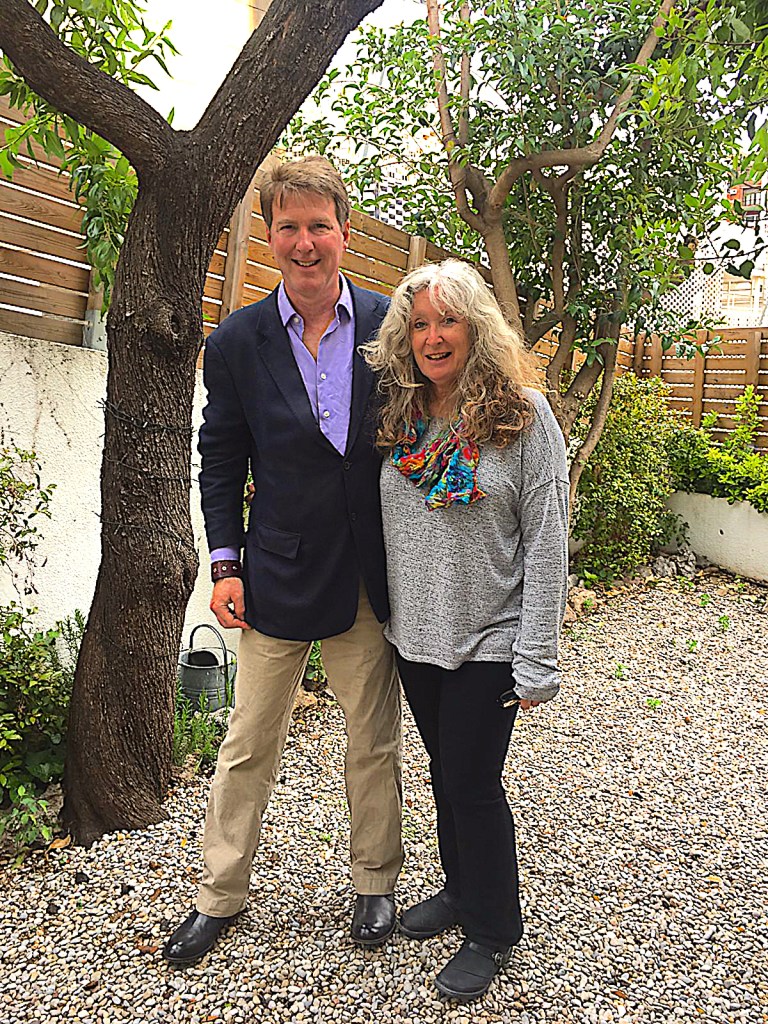
After getting our bearings, we headed out across the hilly terrain around Park Güell in search of the perfect meal of tapas and sangria. The destination? Las Delicias, in the Carmel district. The restaurant was extremely crowded indoors and out, but we asked for a seat on the terrace and got a prime one, along the teeming sidewalk, within 15 minutes. As you can see from the picture, even though they were tapas, Barcelona tapas portions are huge. We shared the chicken croquettes (Croquetas de pollo), grilled Galacian-style octopus with a generous amount of paprika (Pulpo a la Gallega), Swiss potatoes with paprika (Patatas bravas o suizas), Grilled Jalapeños (Jalapeños) and stewed mushrooms. Marvelous fresh food and marvelous tasty sangria (Sangria di Vino) to go along with it! What an introduction to tapas!


After the restaurant, we wandered back over the hills towards Park Güell. We explored the area above the portion of Park Güell that you have to have a timed entry ticket to enter, which was vast anyway. The promenades, walkways, gardens and stone colonnades seemed to stretch forever into the hills.



We were lucky enough to happen upon a group of Flamenco/Samba dancers and musicians, playing underneath one of the stone colonnades, which made for an intimate experience with wonderful acoustics. It was a magical afternoon. We watched the two dancers and their small band for a long time – there was such a great energy and spirit to their performance!

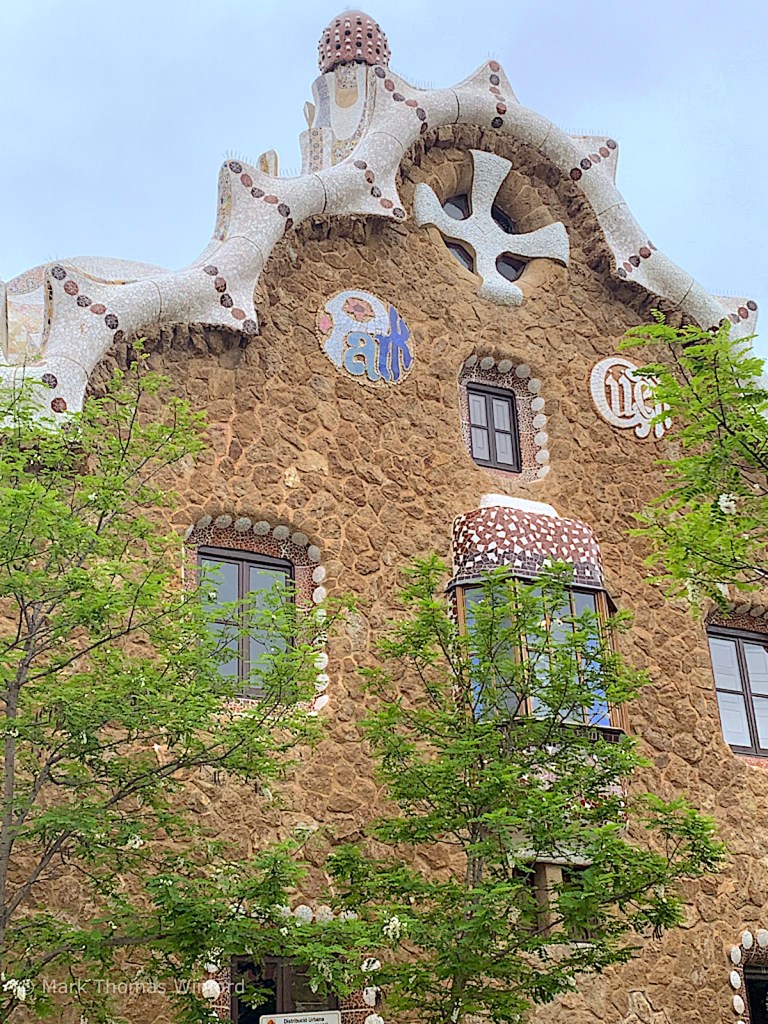
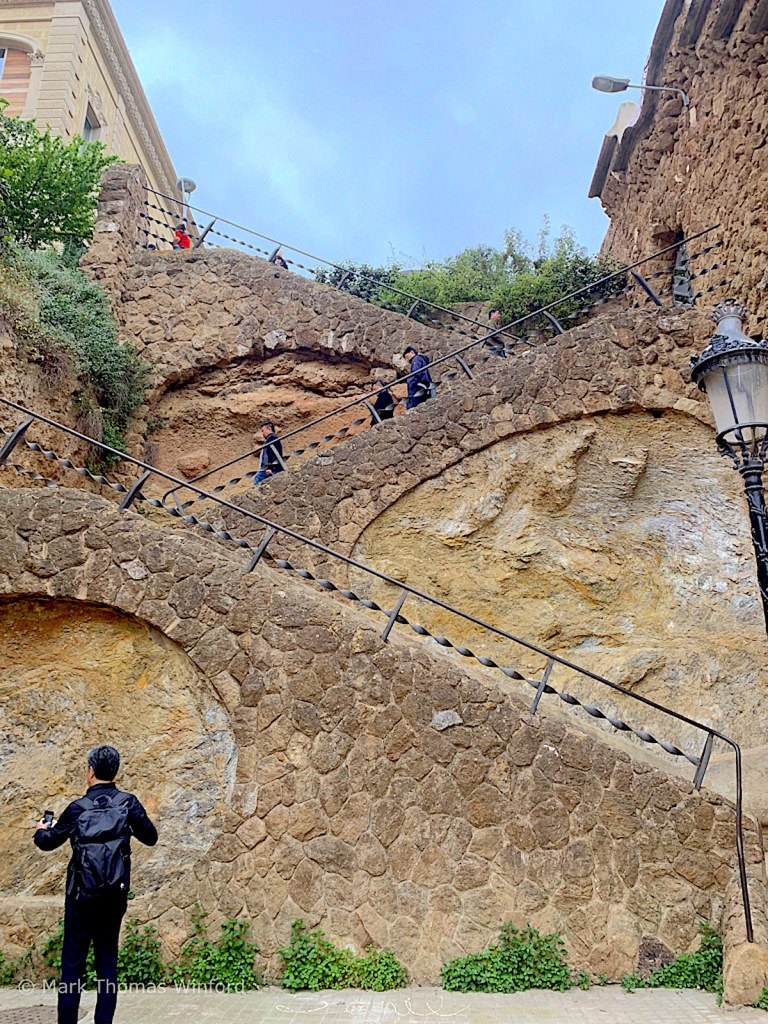
“Seven buildings designed by Antoni Gaudí (1852-1926) in Barcelona or its surrounding area were included in the World Heritage List in 1984 and 2005. These buildings bear witness to the exceptional contribution of Gaudí’s creations to the evolution of the architecture and construction techniques in the late 19th and early 20th centuries. They are the expression of an eclectic and very personal style that their creator employed not only in architecture, but also in gardening, sculpture and many other decorative arts. The seven buildings are: Park Güell, Palau Güell, Casa Milà, Casa Vicens, Gaudí’s work on the Sagrada Família’s Nativity façade and crypt, Casa Batlló and the Colònia Güell crypt.” (from the parkguell.barcelona website) We visited all of these site with the exception of the Colònia Güell crypt over our 6 days in Barcelona.

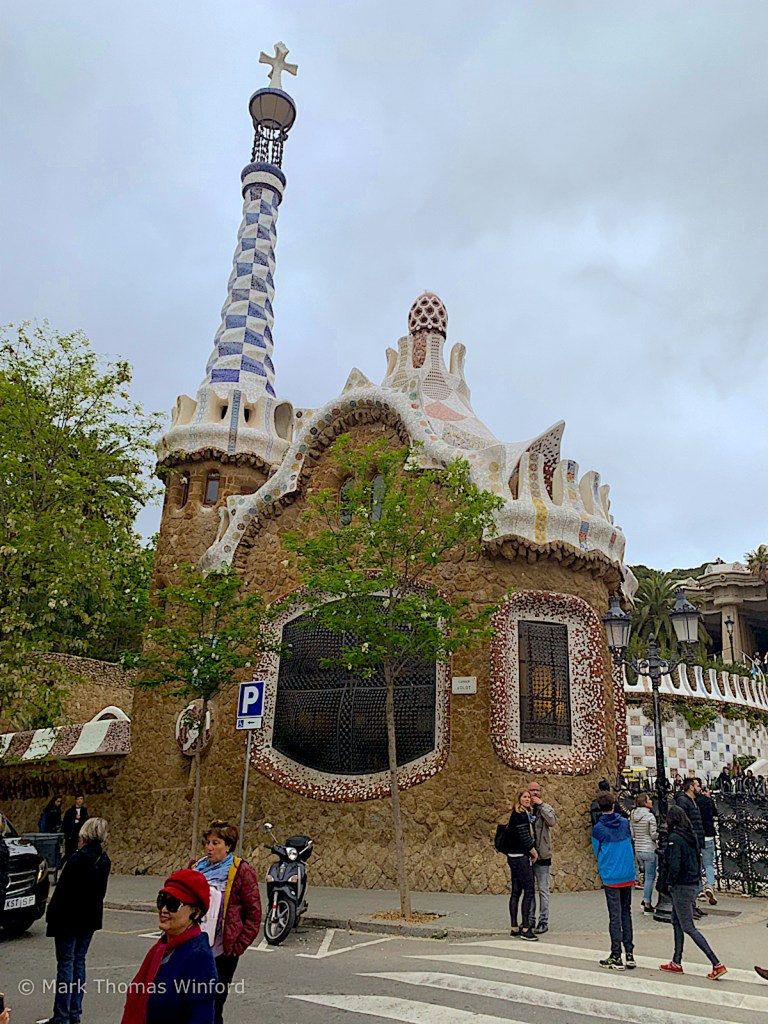
After the performance we wandered through the Park Güell upper environs for quite some time. This was such a fantasy world that Antoni Gaudi created here. From these beautiful quarters, high on the hills overlooking the big city, we could gain a good view of the massive Sagrada Familia, the Basílica de la Sagrada Família, on the plains.
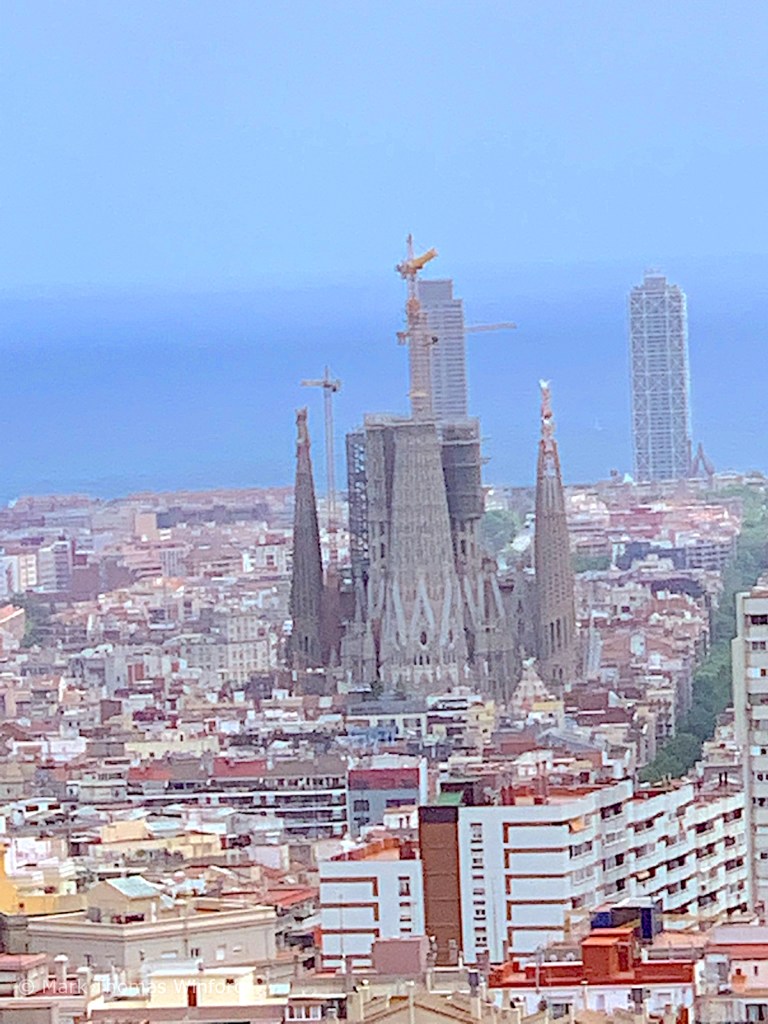
The Basílica de la Sagrada Família is a UNESCO World Heritage site, and has been continually under construction since 1882. The basilica is huge and dominates the skyline of Barcelona. “The Sagrada Familia is an exceptional temple, both in terms of origin and foundation and in terms of purposes. As a result of the work of the brilliant architect Antoni Gaudí, it was a project promoted by and for the town, and five generations have been watching the evolution of the temple in Barcelona. Currently, more than 135 years since the laying of the first stone, the Basilica is still under construction and is expected to be completed in 2026.” (from the sagradafamilia.org website)

